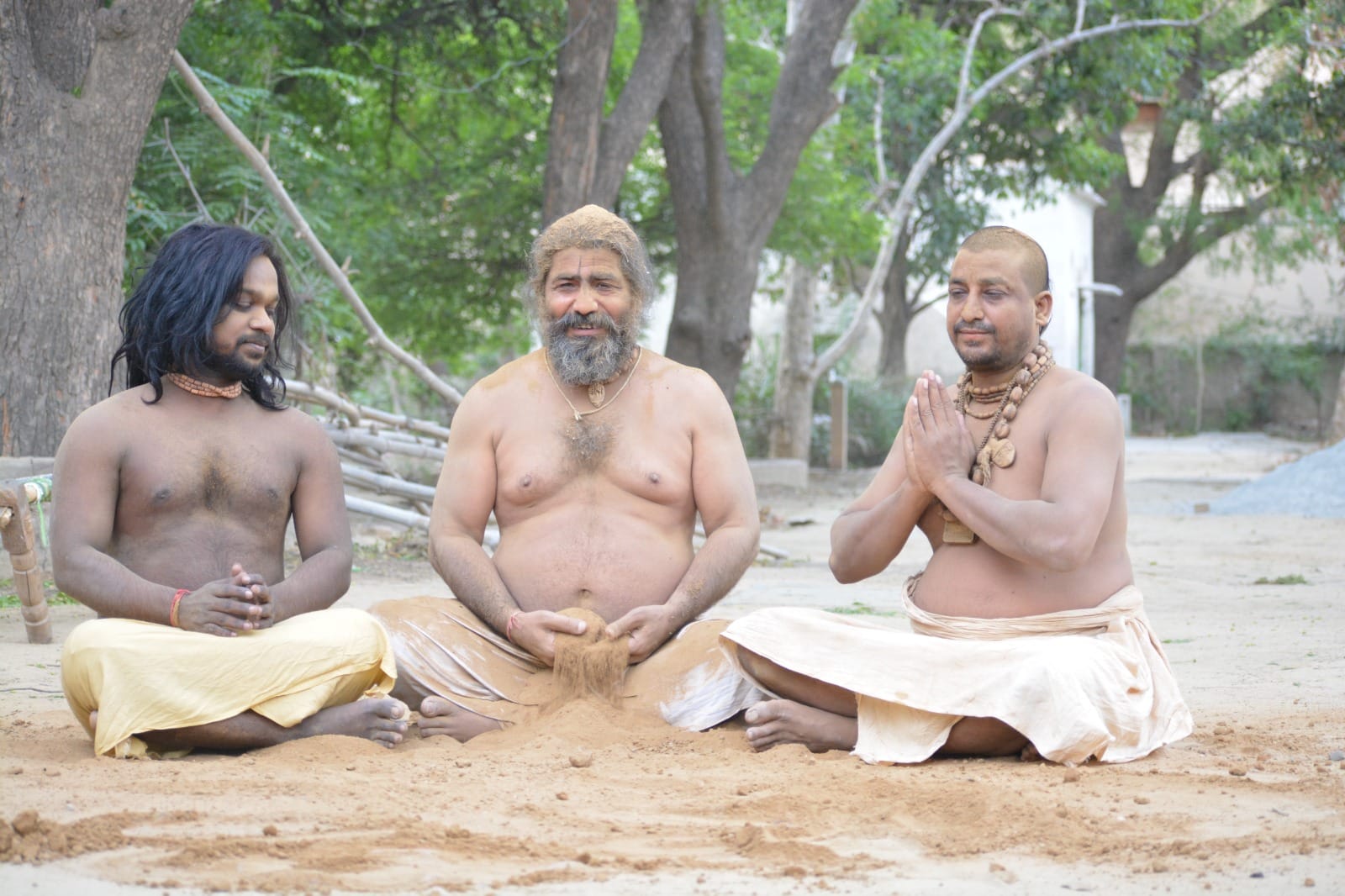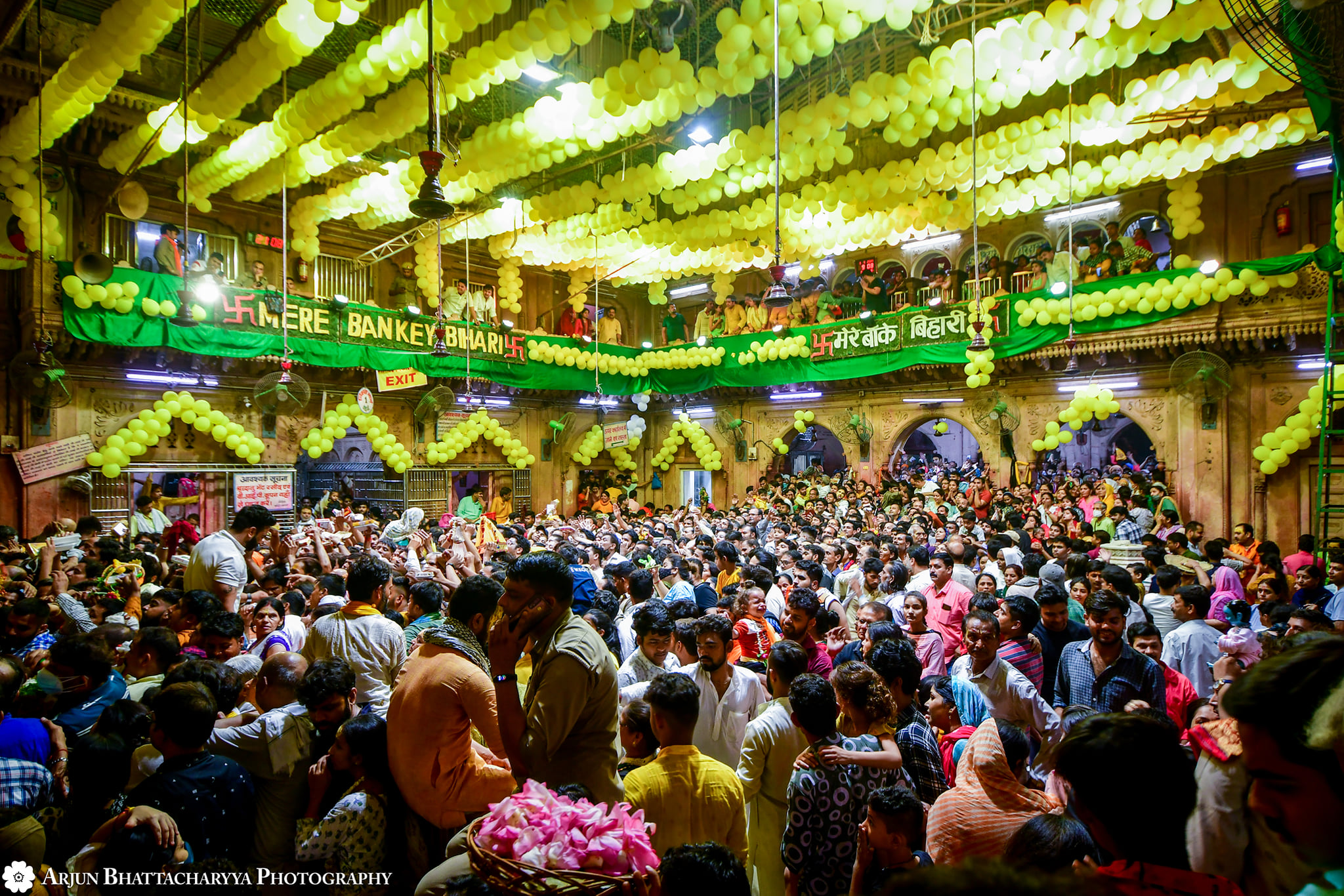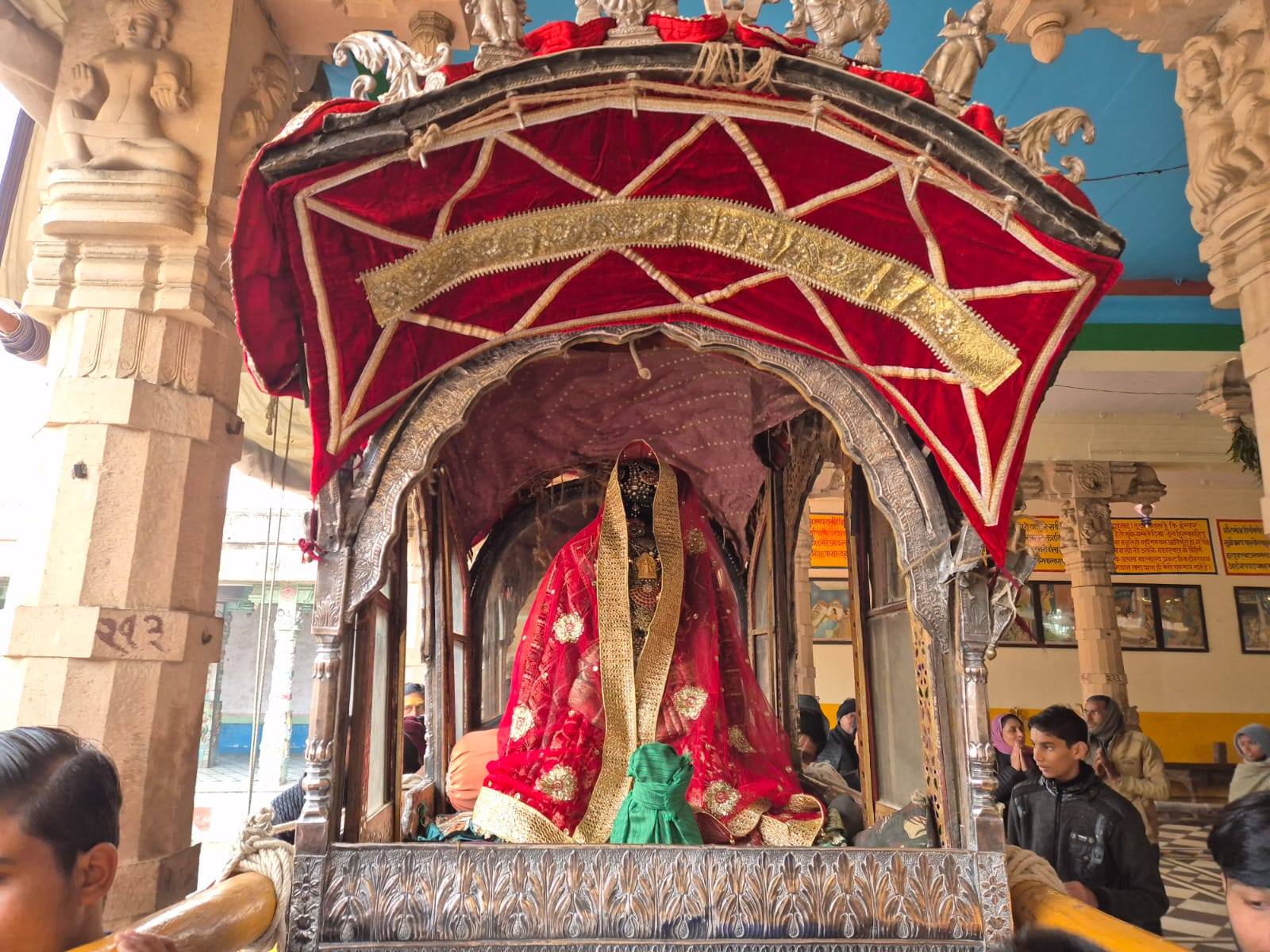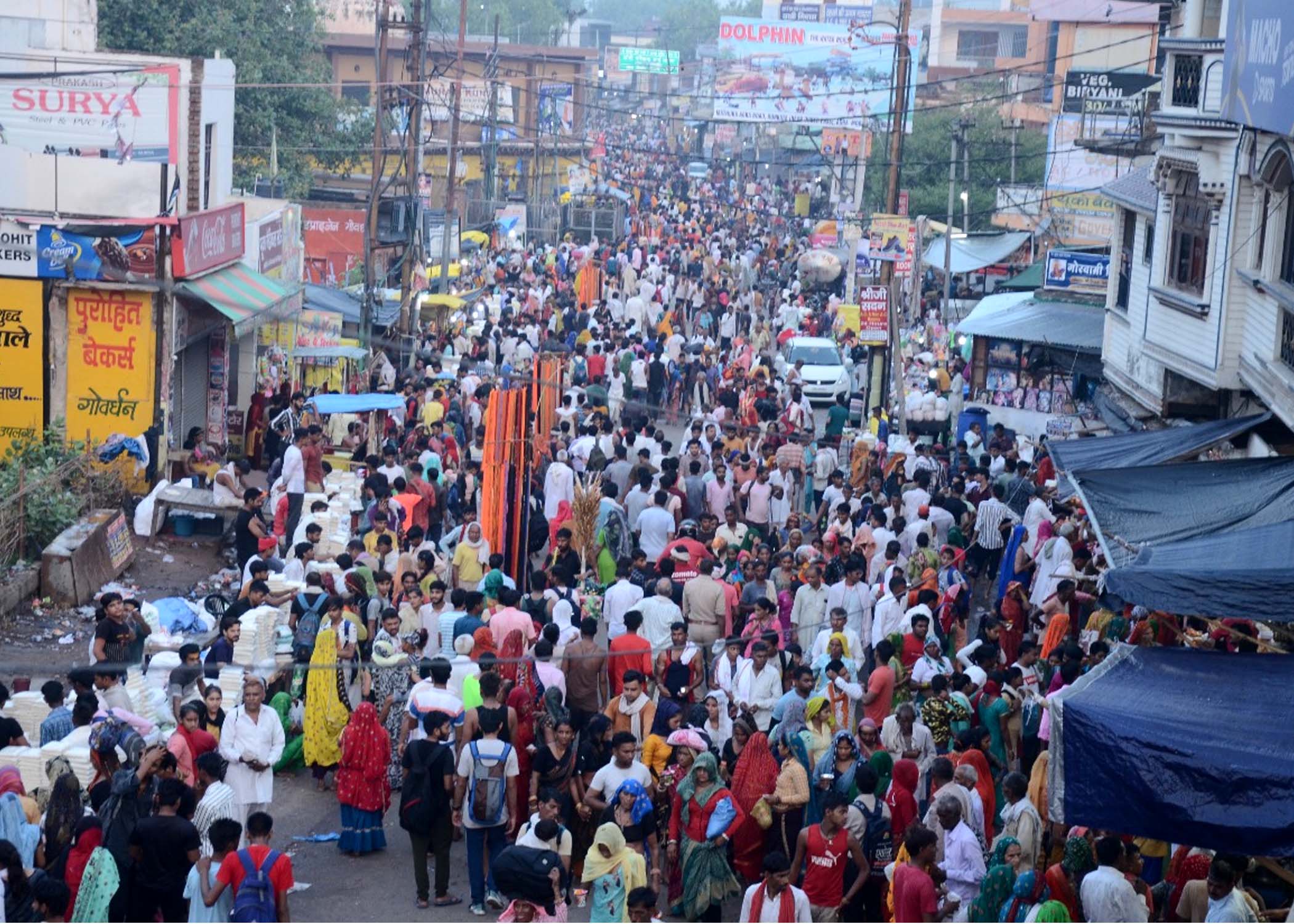Recently,on 17th May (Friday) the appearance day of Shri Jahnava thakurani, the eternal consort of Shri Nityananda Prabhu was celebrated in Radhakund amid thunderous chanting, exuberant dancing, Mahabhishek, grand feast and smearing the holy dust of Braj – Vrindavan.
2024.05.18 (Vrindavan Today News): Shri Ramakrishna Dev explained that in the current age known as Kali Yuga, three things are veritable manifestations of the divine. These elements are the holy dust from Vrindavan (Brajraj), the blessed food offering from Srikshetra (Lord Jagannath), and the sacred water from the Ganga river.
Shri Ramakrishna Dev himself collected the holy dust from Vrindavan and spread it in the Panchavati area of the Dakshineswar Temple. He declared that this place would now be called “Vrindavan,” signifying its transformation into a holy site. The reason why the dust from Vrindavan is considered sacred is because it is the very land where Lord Krishna, the ruler of the universe, appeared in human form and joyfully played with this dust. Additionally, the beloved devotees of Lord Krishna, the Braj Gopis, also lived on this land.
Among the numerous pilgrimage sites in India, Vrindavan stands out with its unique atmosphere. Unlike other places where a specific temple holds great significance and attracts pilgrims, Vrindavan’s reputation as a sacred destination is not tied to any one temple. Instead, it is the glory and aura of Vrindavan itself that gives the temples there their renowned status.
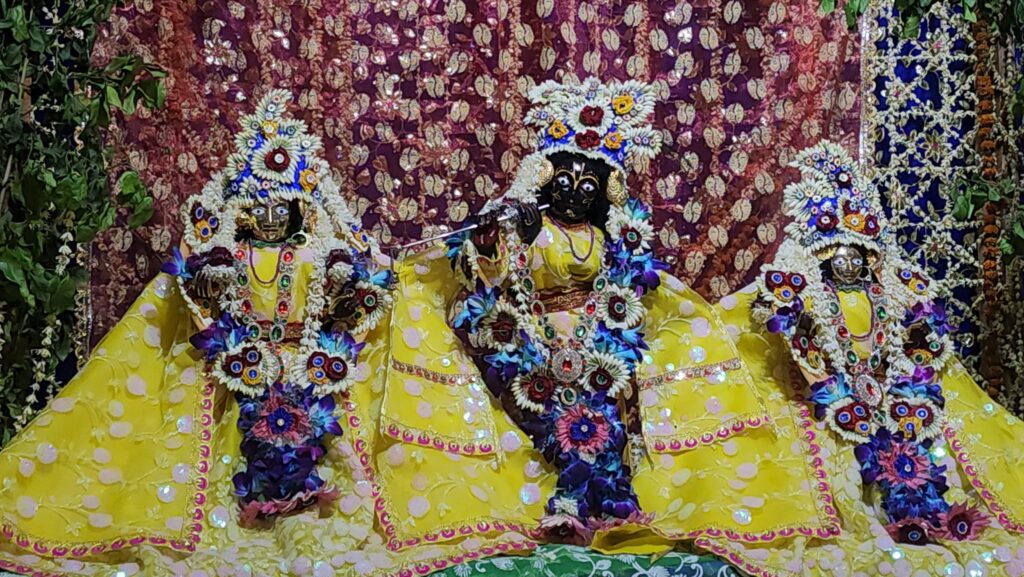
For example, Kashi (Varanasi) is famous for the Vishwanath Temple, Nilachal is renowned for the Jagannath Temple, and Dwarka is known for the Dwarkadhish Temple. In contrast, Vrindavan doesn’t have a single temple that stands as its focal point.
Vrindavan, with its collection of various temples dedicated to different saints, has taken on a divine essence of its own. It has become a complete deity, a treasure worthy of adoration. In fact, Vrindavan itself has become the focal point of worship, surpassing even the worship of Lord Hari (another name for Lord Krishna). The town of Vrindavan is considered a precious wealth, cherished by saints and devotees alike.
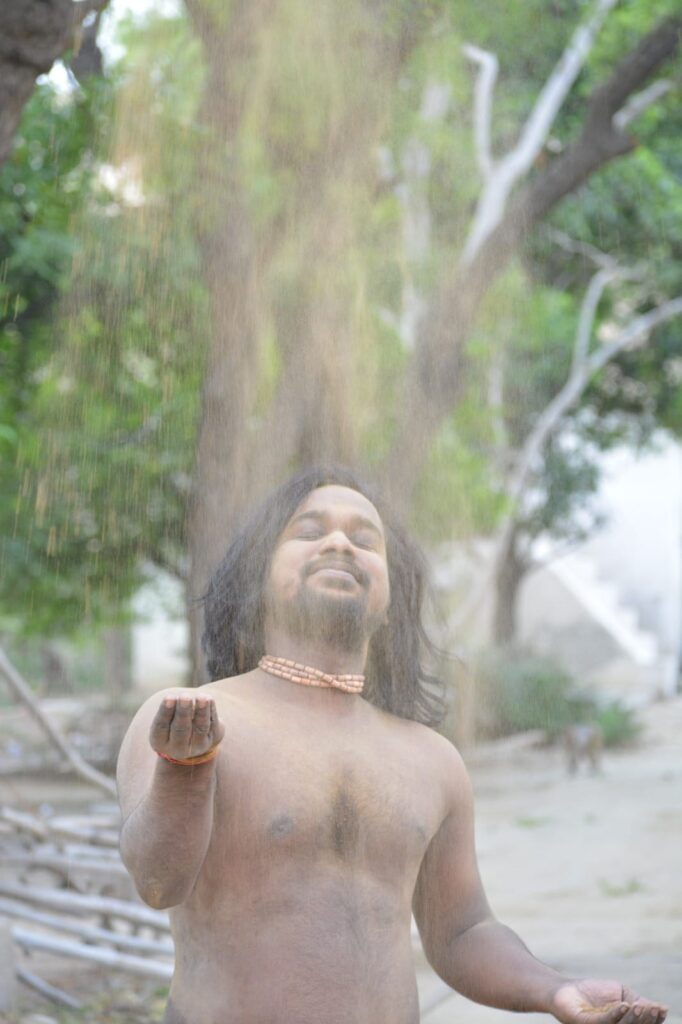
Baul sang –
“Jabo brojer kule kule
Amra makhbo paaye ranga dhuli
Ore noyonete noyon diye rakhbo tare
chole gele jete debo na na na”…….
Translated roughly to –
“I will go to the land of Vrindavan,
I will smear myself in colorful dust,
Oh, with my eyes fixed on him,
I won’t let go of his feet
If he leaves, I won’t go, no, no, no,
I won’t go.
I will keep you in the center of my heart, won’t let you go,……..
Throughout the ages, saints from Bengal have nurtured a profound desire—to smear their bodies with the sacred dust of Vrindavan. Vaishnavs believe that they do not have the direct right to seek the grace of Radha and Krishna. Instead, they humbly beseech for the mercy of the holy dust of Braj.
To the devotees, that dust is not mere earthly particles but Gopi-pada-renu, the very essence of the dust of gopis’ feet—the beloved cowherd maidens of Krishna. Each tiny speck of dust holds a spiritual significance, a divine consciousness. It is completely Chinmayan (Divine). In this regard, a remarkable story comes to mind, shared by Shri Suvarna Goswami ji from the revered Acharya lineage of the famous Radharman temple in Vrindavan.
During Suvarna’s childhood, there was a noble Bengali woman residing in Vrindavan as a devoted practitioner. In her final years, she willingly took kshetra-sanyaas, which is a vow to not take a step out of Vrindavan. Young Suvarna would frequently visit the elderly lady, forming a close connection with her. Recognizing him as the son of a Brajvasi Goswami, she held great affection and respect for him
This story exemplifies the deep reverence and devotion the saints and devotees from Bengal hold for Vrindavan, the land of Radha and Krishna. They perceive the dust of Braj as a sacred link, an embodiment of divine love and spirituality, transcending its physical form.
Observing the woman’s simple eating habits and ascetic lifestyle, young Suvarna thought that she might be in need. He persistently insisted to his own mother that they should feed the woman occasionally. Though Suvarna’s mother understood the true essence of the woman’s spiritual state, she decided to play along to satisfy the boy’s compassionate nature. One day, she sent some food for the old lady with Suvarna in a tiffin.
Suvarna brought it to the old woman, and asked her where he can transfer the food as his mother had instructed him to empty the tiffin box and take it back. Puzzled, he asked the woman where he should empty the food. The woman simply pointed to the floor and replied, “Put it here.”
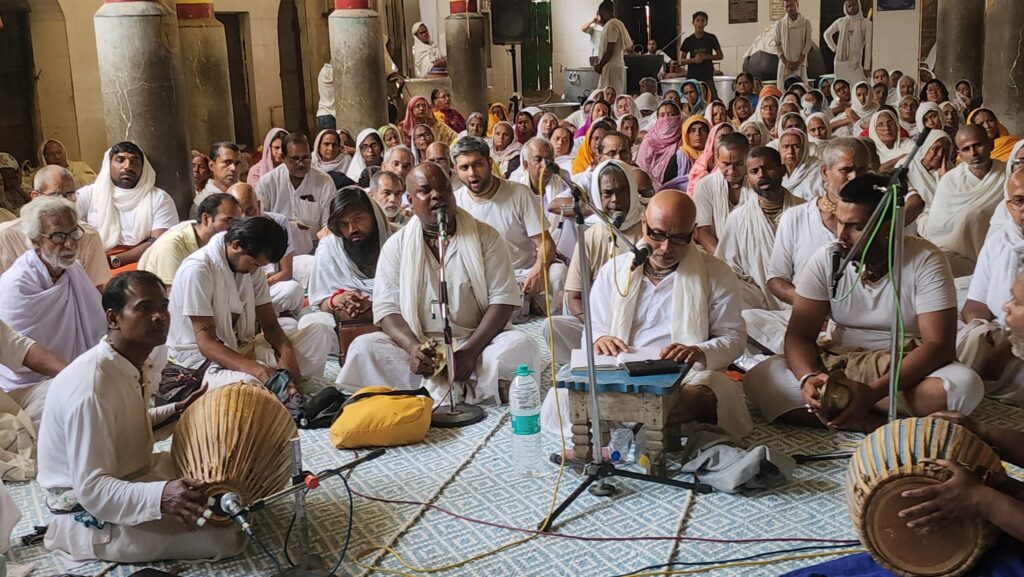
Confused, Subarna questioned her, “Where should I put it on the floor? There’s no container here!”
The woman smiled with profound respect and replied with deep emotion, “Little prince, put everything on this floor.”
Perplexed, Subarna persisted, “On the floor? Why? Don’t you have a bowl?”
The woman gazed at the child’s face and chuckled, responding with immense reverence, “Dear child, I have Braj raj”
This incident involving the noble lady from the vaishya community, driven by an unwavering desire for the sacred dust, choosing to separate from her family and relocate to the distant land of Braj, had a profound and lasting impact on the child’s mind. The lady’s singular aspiration to acquire even a tiny fragment of the divine Braj dust left an indelible impression on his mind, one that could not be erased or forgotten.
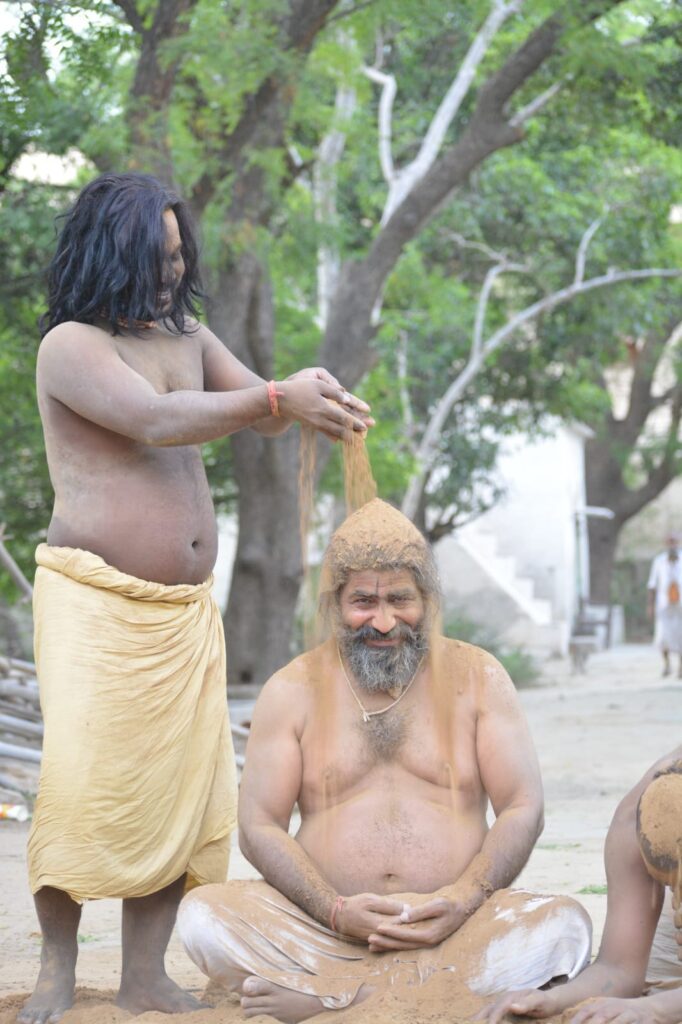
A few kilometers away from Vrindavan, there exists a tranquil and undulating water spring nestled within a dense forest. During the mornings and evenings, the branches of every tree in the vicinity come alive with the harmonious melodies of thousands of birds, including tea birds, heeraman, Shah bulbul, and cuckoos. As the sun rises, these feathered creatures venture out in search of sustenance, only to return with grace as dusk settles in.
Amidst this picturesque landscape, one can also catch sight of groups of deer, blackbuck, hare, and nilgai, quenching their thirst from the water tank with a sense of surrender. In this forest, tiny ferns flourish, providing a tranquil abode for Vaishnavs immersed in deep meditation. Some choose to indulge in sacred readings, while others find solace in profound contemplation. Adorned with sandalwood paste and the revered dust of Braj, which when dries, gives these devotees a resemblance to Shaiva yogis covered in ash.
After a few days, JIva Goswamipad, one of the esteemed Shadgoswamis, journeyed to the capital city of Agra. There, he acquired this abandoned land from Emperor Akbar, the ruler of Hindustan, and meticulously nurtured it in accordance with traditional practices. The certificate documenting this transaction, written in Persian, has been carefully preserved. Over time, this place has gradually transformed into a sanctuary, providing a haven for the Gaurange Mahaprabhus devotees, free from the confines of worldly attachments. The water pond in this sacred location is known as Radha Kund, while an adjacent reservoir bears the name Shyamkund.
Hardly anyone was aware of their presence. The Vairagis of Gauranga Mahaprabhu, particularly the Six Goswamis, discovered the magnificence of this place through their spiritual practices and have now shared its greatness with everyone.
Mother Jahanva
At one side of the pond, there were steps made of wood and stone that descended into the water. Right above those steps, sat an old woman. She wore a white saree with an uttariya covering her upper body. She had a beautiful forehead that seemed to emit a spiritual light. Holding a walking stick, she had reached the end of a long journey from Gaurdesh (West Bengal) to Vrindavan.
The journey had been difficult, lasting for more than two months. There were no palanquins or elephants for rent, and she walked the entire way. There were also fears of encountering bandits. Along the journey, she occasionally got to stay as an honored guest at inns or noble jagirdars’ places and meals to eat.
As she sat at Radha Kund, all her troubles vanished in an instant. This place was the sacred land of Braj, the longed-for Vrindavan! Despite her old age, her face displayed wrinkles that exuded motherhood, compassion, and yet carried a resolute strength. Even though she didn’t have any children of her own, thousands of men and women revered her as their mother. As soon as she arrived, all the Vaishnava saints from Kutia (huts) came and humbly bowed down to her in reverence!
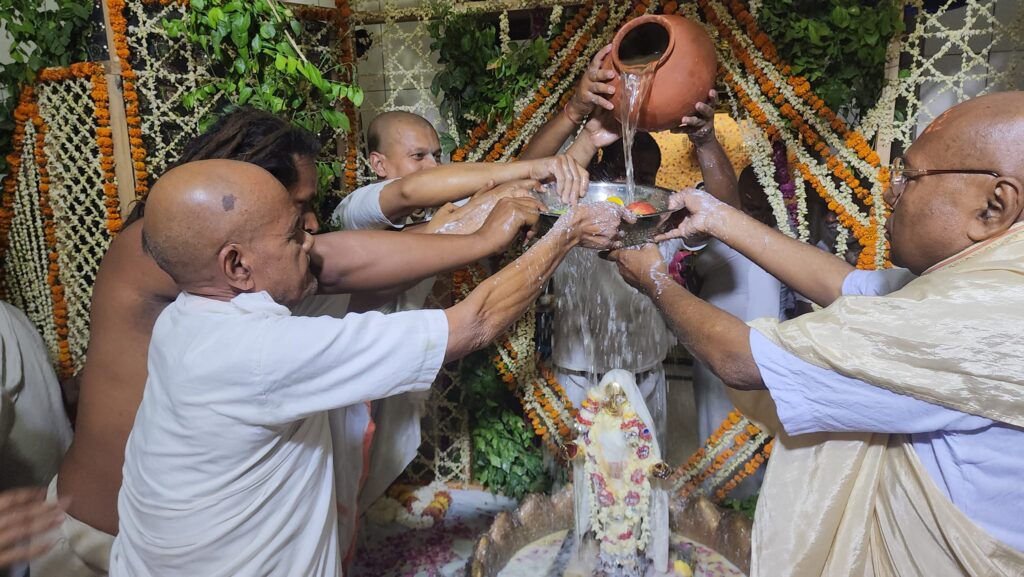
She was none other than Mother Jahnava Thakurani, the wife of Shripad Nityananda Prabhu. Sadly, she is largely forgotten by both Bengalis and Vaishnavas today. However, after the disappearance of Nityananda and Advaita, she became the Sanghajanani (spiritual mother) of Sri Chaitanya’s Gaudiya Parampara. She was the first Acharya (spiritual leader) of the Gaudiya Samaj after Nityananda and initiated many great sages.
We have discussed the decline of Bengali women during the late Middle Ages, but rarely do we hear about the remarkable achievements of those extraordinary women who accomplished the seemingly impossible. Among them are Jahnva Thakurani and Hati Vidyalankara, who have unfortunately been forgotten today. Jahnva Ma, in particular, single-handedly navigated the challenges of establishing a nascent community (Sangha) in a Hindu society influenced by the prevailing Sharia law during the Muslim era. Her significant contribution lies in shaping the foundation of Srimati Radharani worship, which remains a fundamental aspect of devotion in India.
The three main deities of Vrindavan, namely Govinda, Gopinath, and Madanamohan, were originally discovered by Rupa Goswami, Madhu Pandit, and Advaita Acharya, respectively. Initially, there were no deities of Radharani alongside these deities. However, Jahnva Mata commissioned the creation of Sri Radhika deities made of Ashtadhatu (eight metals) by the renowned Bengal artist Nayan Bhaskar. She personally carried these to Braj and installed them next to Krishna deities. These Radhika deities are among the earliest and authentic representations of Radharani in India.
There are many other beautiful legends associated with Jahanava Maa. It is said that the Gopinath temple had a small deity of Radharani, but the deity was deemed unfit due to the small size. Jahnva Ma decided to bring a larger deity of Radharani. However, when the temple servants saw the new deity, they noticed a striking resemblance between the deity’s face and that of Jahnva Ma. This led them to doubt whether it would be appropriate to place the deity next to Krishna.
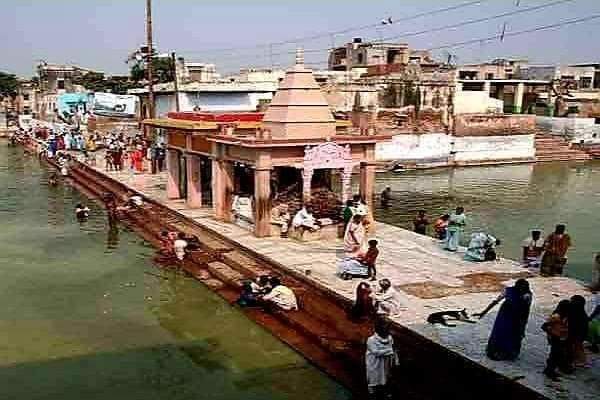
That night, Gopinath himself appeared in the dream of the devotees and reassured them. He revealed that Jahnva Ma, as the wife of Lord Nityananda, was an incarnation of Radha’s esteemed friend, Anangamanjari, and was very dear to Him. Thus, Gopinath instructed them to place Jahnva Ma as Anangamanjari on the left side of Krishna, and the previous small deity of Radharani on the right side. Even today, in the Gopinath temple, the deity standing on the left side of Krishna is worshiped as Jahnva Ma herself. Such was the immense influence and prestige of Jahnva Ma’s extraordinary accomplishment.
It is believed that the revered Jahnva Ma attained union with the Gopinath deity in the final moments of her life. The understanding of devotees and historians may vary, but there is no denying that Jahnva Ma performed her illustrious divine pastimes in the sacred land of Braj, far away from Gaurdesh.
Now, let me share a story. Once, the divine sage Narada became proud, considering himself the greatest devotee in the universe. However, Lord Vishnu did not accept this and decided to prove otherwise. After a few days, Lord Govinda experienced a severe headache that couldn’t be alleviated. When asked how to relieve His pain, the Lord replied, “If someone smears the dust from the feet of a pure devotee on My head, the pain will subside.”
Narada embarked on a quest to find such a pure devotee. But everyone he approached refused, saying, “Shall I place my feet on the head of God Himself and risk going to hell?” Exhausted, Narada eventually turned to the Gopikas in Braj. Their response was remarkable: “Oh, what is this? If God finds solace in the dust of our feet, then we willingly go to hell! How much dust does He need?” Narada understood then who the greatest devotees were.
This anecdote beautifully highlights the glory of devotees and, in particular, the exalted status of the Gopis. As the saying goes, devotees of God are considered even greater than God Himself.
In this era, Krishna in the form of Chaitanya Mahaprabhu once again descended in the land of Bengal, this time in the form of His devotee. Hence, not only Braj but also the dust of Bengal is considered sacred. This gave rise to the festival of Dhulot, which originated in Bengal.
In Vrindavan, the festival of Dhulot, celebrated for over 500 years, is a cherished tradition that holds great significance in the hearts of devotees. This annual celebration revolves around the veneration of Brajraj.
The origins of Dhulot Mahotsava trace back to the year 1576 when Shri Raghunath Das Goswami became the Mahant of Shri Radha Kund. The festival has been carried forward through generations, flourishing under the guidance of his successors, Shri Jiva Goswami and Shri Krishna Das Kaviraj Goswami. Each succeeding Mahant has faithfully upheld the tradition, ensuring the continued celebration of this joyous festival of divine significance.
The festival itself is a sight to behold, as saints and devotees immerse themselves in the holy dust of Braj with exuberance and delight.
Even today, in the temples of Bengal, there are dust festivals held at the conclusion of special events.
Of course, as time has passed, some aspects of the festival may have changed. In some places, it is celebrated with colors, while in others; it is marked by Naam Kirtan (chanting the names of God). However, the main goal remains constant—the glorification of dust, the symbol of insignificance and humility.
(This article was first published in ‘Vrindavan Today’ print magazine May 2023 edition, with contribution from Shri Halley Goswami)


